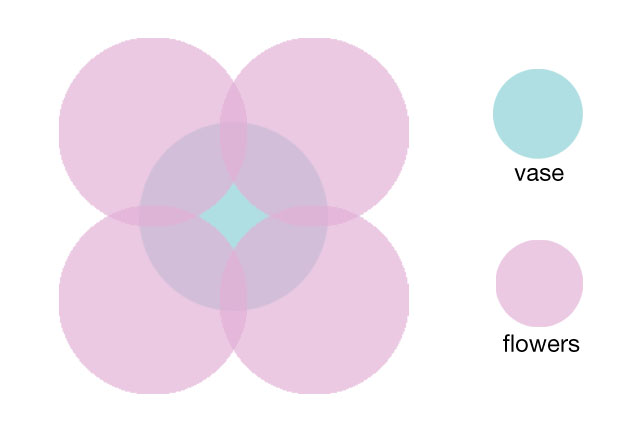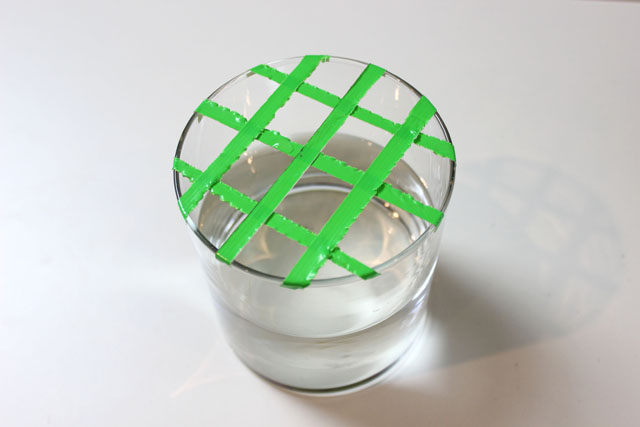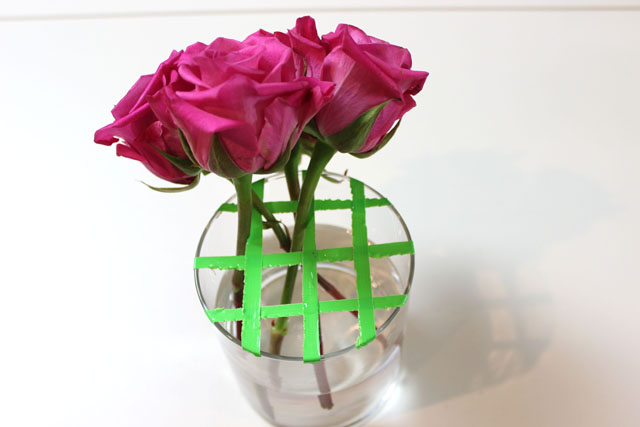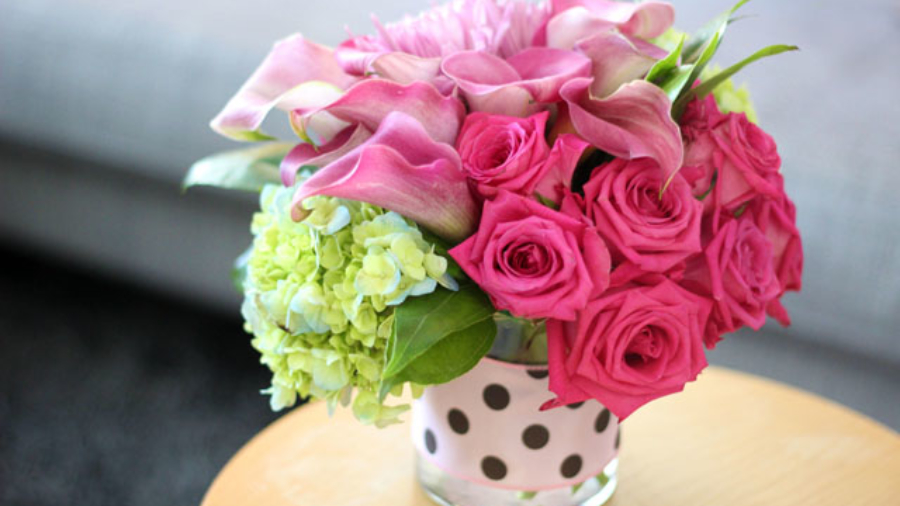It used to be that if you wanted a beautiful floral arrangement for your home, or to give as a gift, you went to a florist. Nowadays, because of the lower cost and greater convenience, more and more people are picking up flowers at the supermarket instead. That’s what I frequently do.
Creating your own floral arrangement from supermarket flowers can save you a lot of money. The flowers for the arrangement in this project, which I bought at Trader Joe’s, cost only about $20, and the glass vase from Michael’s was less than $3. Yet the finished arrangement could easily retail for $80 to $100 — or even more — at a florist.
If the thought of putting together your own floral arrangement scares you, don’t worry, it’s pretty easy. I learned by sticking my fingers into arrangements florists delivered to the office where I used to work, to analyze how they were assembled. I’ve also had the privilege of working with several top-notch florists in Los Angeles, who have shared their tricks of the trade with me. They swore me to secrecy, so, naturally, I’m passing these tips on to you.
Get the right proportions
One secret very few people know is there’s an ideal proportion between your vase size and the amount of flowers you should use. I usually work with a 1:4 vase-to-flower ratio, meaning the diameter of the flowers should be approximately four times the diameter of the vase. For example, I wanted the flowers in my arrangement to be about 12 inches across, so I selected a vase that is a little more than three inches in diameter. This ratio makes your arrangement look full. If you use a larger vase with the same volume of flowers, the arrangement can appear skimpy.
Create a support grid
If you’ve ever arranged flowers in water, you know it can be a challenge to keep the stems from moving out of place. One way to solve this problem is to support the stems with a grid of tape along the top of the vase. Florists use floral tape, but I use duct tape cut into ¼-inch strips, spaced about an inch apart. The taped grid on the vase will keep the stems upright. It can also help you map out where to place the different flowers. Instead of a tape grid, I’ve sometimes placed a folded piece of chicken wire in the vase to help support the stems.
Go monochromatic
Another challenge many floral novices face is selecting a color scheme. What colors go together? And how many colors should go in the mix? The best advice I’ve ever gotten about color came from one of my favorite florists: Go monochromatic. I now do almost exclusively monochromatic arrangements, whether for gifts or event centerpieces. This makes shopping for flowers easier, because I only have to look for one color. And, in my opinion, monochromatic arrangements have a more modern and upscale feel. The only other color I introduce in my arrangements is green — in the form of leaves or hydrangeas — because green goes with everything, and it actually accentuates the color of the other flowers.
Even if you’re going with a monochromatic color scheme, select three or four different types of flowers to incorporate various textures. To make my example here, I bought three small bunches of flowers at Trader Joe’s that ranged from $3.99 to $5.99 each — including roses, calla lilies and chrysanthemums. Each of their petals are distinct from the others, so even though they’re the same color, the texture variations provide visual contrast.
Prepare the stems
To create a dome-shaped arrangement, cut the stems of the flowers so that the ones positioned at the edge of the vase are shorter than the ones in the center. Cut the stems at a 45-degree angle, which allows for more surface area on the stems to absorb water. Then remove any leaves on the stems that will be submerged. I know it seems like a shame to pick the leaves off and discard them, but any plant material left in the water will contribute to bacteria growth. (Leaves above the water line are fine.)
Separate flowers by type
Another trick I use when arranging flowers is to not mix the different types of flowers. Like the child at mealtime who won’t let his potatoes touch the peas, I keep each of the different flowers in its own section in the vase. This makes floral arranging so much easier, because it takes the guesswork out of how to combine the arrangement. And again, I find this type of arrangement also looks more modern and high-end.
Fill in gaps with greenery
After you’ve filled the vase with flowers, you might still see a few empty spots here or there. Fill these gaps with greenery, using leaves or succulents from your garden. (Just be sure that only the stems are submerged in water.) Bushy blooms like hydrangeas also make great fillers.
Hide the stems
If your vase is transparent, you will see the stems in the water, and seeing submerged stems is a no-no in professional arrangements. They need to be covered up. One florist friend calls this “hiding the underwear.” Many florists cover the stems by lining the inside of the vase with large leaves. It’s a great look, but the leaves will contribute to bacteria growth. The simplest solution is to wrap a ribbon around the outside of the vase, adhering it in place with double-sided tape. Of course, if your vase is opaque, you don’t need to hide your stems. Still, wrapping a ribbon around the vase can add a nice finishing touch.



Very nice tips. Thank you, this will be very helpful.
Thanks Denise!